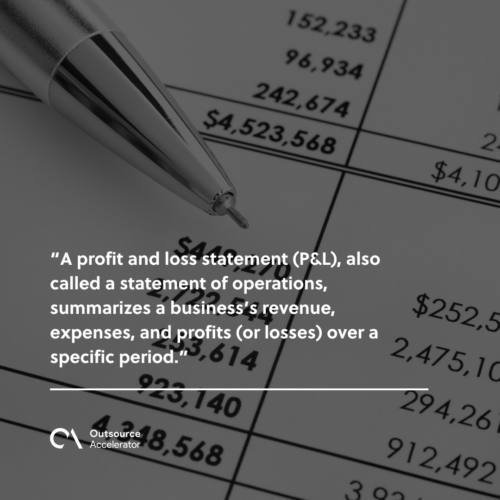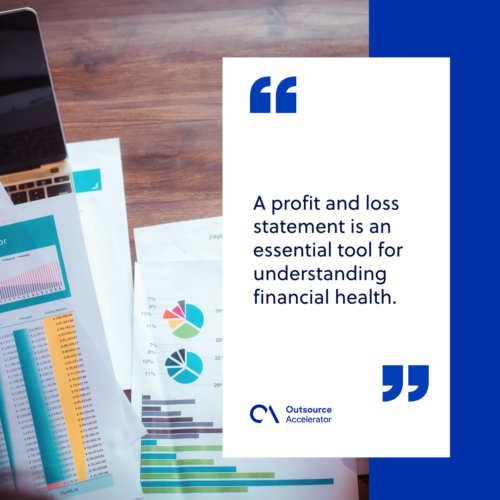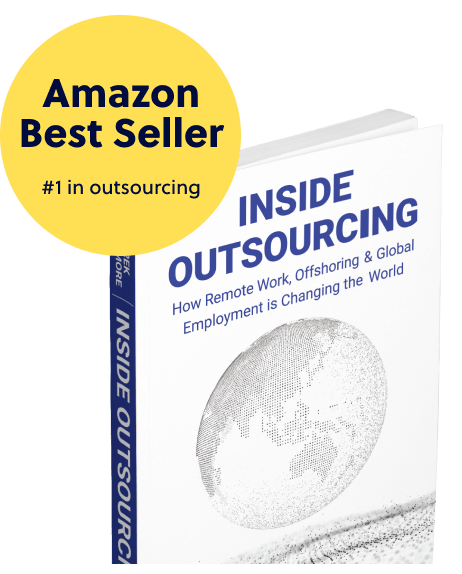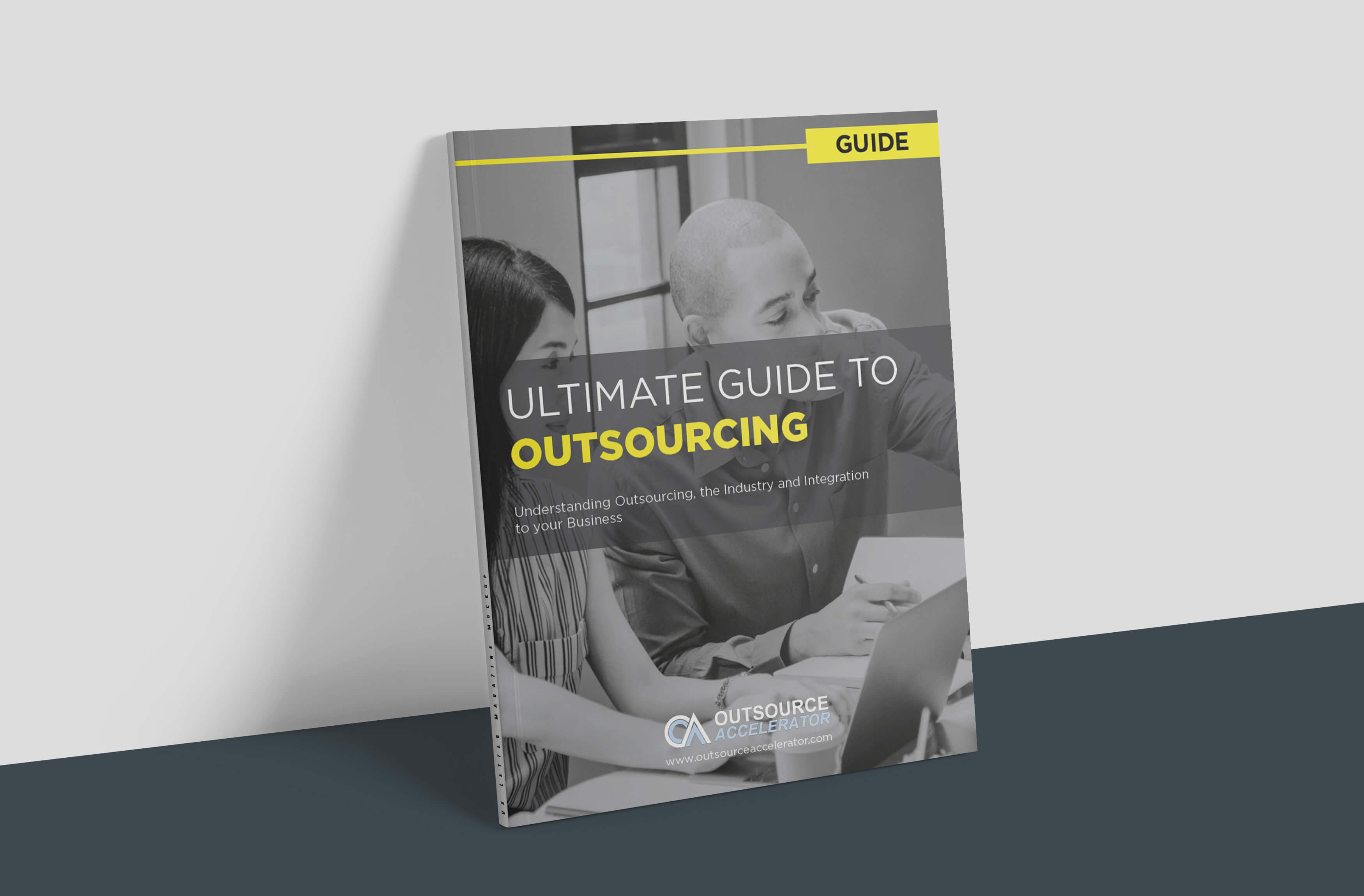A quick guide to the profit and loss statement (P&L)

When running a business, you know that some numbers bring excitement (profits), while others induce stress (losses). This is why we have the profit and loss statement (P&L), a document that tells the financial story of your business in a way that even non-accountants can understand.
If you want to know whether your company is thriving or merely surviving, here’s where to start.
What is a profit and loss statement?
A profit and loss statement (P&L), also called a statement of operations, summarizes a business’s revenue, expenses, and profits (or losses) over a specific period. It reveals whether you’re making money or bleeding cash.
Companies use this document to track financial health, spot trends, and make informed decisions. Investors, lenders, and even tax agencies rely on them to assess business viability.
The P&L statement is one of the three key financial reports for businesses, along with the balance sheet and cash flow statement.

P&L statement vs balance sheet
How do profit and loss statements differ from balance sheets? The former focuses on profitability over a specific period, whether a business is making or losing money. The latter provides a snapshot of the financial position at a given moment.
The P&L statement details revenue, expenses, and net income, giving insight into financial performance. On the other hand, the balance sheet lists assets, liabilities, and equity – offering a clear picture of what a company owns and owes.
Think of it this way: The income statement answers the question, “Is my business profitable?” whereas the balance sheet responds with, “What is my company worth right now?”
Both are crucial tools, but when it comes to evaluating financial health and decision-making, this document is often the first place business owners and investors look.
8 types of P&L statements
Profit and loss statements come in different forms, depending on complexity and business needs:
Commonly-used P&L statement formats:
1. Single-step income statement. The simplest format. It subtracts total expenses from total revenue in a single step to determine net income.
2. Multi-step income statement. It separates operating and non-operating activities to provide a more detailed breakdown of financial performance.
Non-standard P&L statements:
1. Comparative income statement. This P&L statement form displays financial data for multiple periods side by side, making trend analysis easier.
2. Common size analysis income statement. This statement type expresses each line item as a percentage of total revenue, useful for benchmarking against industry standards.
3. Variance P&L statement. It compares budgeted figures with actual performance, highlighting discrepancies to improve financial planning.
4. Segmented P&L statement. This breaks down financials by business unit, product line, or region to evaluate performance at a granular level.
5. Driver-based P&L statement. This form type focuses on key business drivers (e.g., customer acquisition, pricing strategies) to analyze profitability beyond traditional accounting figures.
6. Composite P&L statement. This combines multiple P&L types into a single document, offering a comprehensive financial perspective.
Choosing the right P&L format depends on your business goals. A small business may prefer a simple document, while a large corporation might need a segmented or driver-based report for deeper insights.
How profit and loss statements work
A P&L statement follows a logical flow. Here’s a breakdown of the key components:
- Revenue (Sales). The money earned from selling goods or services.
- Cost of goods sold (COGS). Direct costs associated with producing what you sell.
- Gross profit. Revenue minus COGS, showing earnings before other expenses.
- Operating expenses. Costs required to run the business, such as rent, salaries, and marketing.
- Operating profit (EBIT). Gross profit minus operating expenses. Also known as Earnings Before Interest and Taxes (EBIT).
- Non-operating expenses. Interest, taxes, and one-time costs.
- Net profit (or loss). The final number — revenue minus all expenses.
Essentially, a P&L statement tells you: “Here’s what we earned, here’s what we spent, and here’s what we have left.”
Profit and loss statement example
Let’s imagine you run a coffee shop. Here’s a simplified statement of operations for one month:
| Category | Amount ($) |
| Revenue (Sales) | 50,000 |
| COGS | (20,000) |
| Gross Profit | 30,000 |
| Operating Expenses | |
| Rent | (5,000) |
| Salaries | (8,000) |
| Utilities | (1,000) |
| Marketing | (2,000) |
| Total Operating Expenses | (16,000) |
| Operating Profit (EBIT) | 14,000 |
| Non-Operating Expenses | |
| Interest Payments | (1,500) |
| Taxes | (3,500) |
| Net Profit | 9,000 |
In this example, the coffee shop made a net profit of $9,000 for the month. That’s the number business owners, investors, and accountants pay close attention to.
Importance of profit and loss statement
A profit and loss statement is an essential tool for understanding financial health. It tracks profitability over time, helping businesses identify trends and adjust strategies before minor issues become major problems.

By analyzing a P&L, companies can also refine their budgeting so that money is allocated efficiently and expenses don’t spiral out of control.
For those seeking investors or loans, a well-maintained income statement serves as proof of financial viability. Investors want to see consistent revenue growth, and banks require solid financial records before approving loans.
And come tax season, having a clear, up-to-date statement of operations simplifies the filing process, reducing stress and potential errors.
Finally, if profits start shrinking, a P&L statement can highlight exactly where expenses are eating into the margins. Whether you’re a startup or an established business, regularly reviewing your income statement ensures you stay on track toward profitability.







 Independent
Independent




